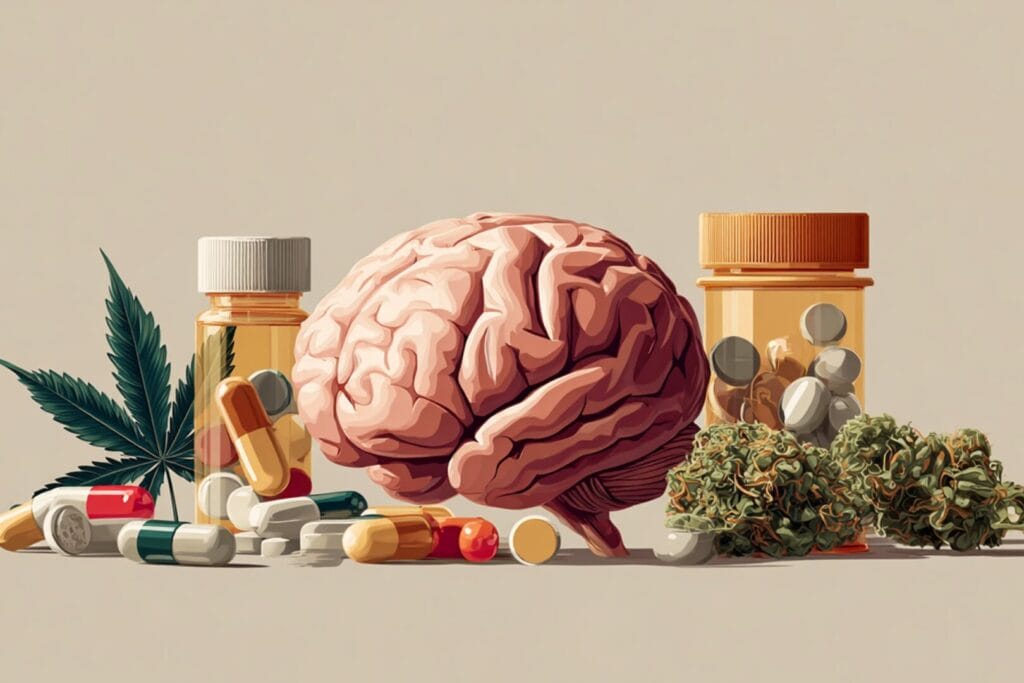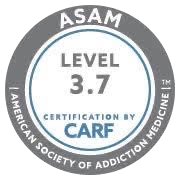What Is Heroin Withdrawal?
Heroin addiction is a serious and life-changing disorder that can lead to severe, even fatal, outcomes. National statistics show that over 902,000 people use heroin each year, with 6.25 million trying heroin at least once in their lifetime.
Withdrawal from heroin is a harrowing experience that refers to the set of symptoms that occur shortly after a person tries getting off heroin. Symptoms can last for days or weeks and make it difficult for people attempting to remain abstinent.
Thankfully, treatment for heroin addiction can make withdrawal from heroin a much simpler and easier process. Typically, signs of heroin withdrawal won’t occur after using heroin for the first time, but continued use will inevitably lead to withdrawal symptoms of increasing severity.
What Happens During Withdrawal?
Heroin withdrawal is the result of a rebound effect. When heroin is used repeatedly, the brain and body adjust to the narcotic effects of the drug. When heroin use stops suddenly, they rebound in the opposite direction, creating intense withdrawal symptoms that directly oppose the effects produced by heroin itself.
Treatment for heroin addiction focuses on alleviating these symptoms while helping people build the tools and skills needed to maintain recovery.
Heroin Withdrawal Symptoms
The degree to which people experience heroin withdrawal symptoms depends on several factors, including the duration, frequency, and amount used, the person’s age, and overall body health.
Withdrawal symptoms fall into three categories: mild, moderate, and severe. The heroin withdrawal timeline occurs over a period of about a week, with symptom severity peaking on day three or four.
Mild Withdrawal Symptoms
Mild withdrawal symptoms are the first to appear in the heroin withdrawal timeline. The first signs of heroin withdrawal can occur as early as eight hours after heroin was last used. It includes symptoms such as:
- Nausea
- Abdominal cramps
- Tearing
- Runny nose
- Sweats
- Chills
- Excessive yawning
- Muscle and bone aches
While some people only experience mild symptoms, long-term heroin use or use in greater amounts will result in even worse symptoms.
Moderate Withdrawal Symptoms
Moderate withdrawal symptoms occur in addition to mild symptoms, so people can still experience the heroin cold sweats, nausea, and other mild symptoms during this next phase. Moderate symptoms typically occur after one or two days and include:
- Vomiting
- Diarrhea
- Agitation
- Restlessness
- Tremors
- Trouble concentrating
- Goosebumps
- Fatigue
When experiencing these symptoms, it is vital for people who are getting off heroin to drink plenty of fluids, eat nutritious foods, and get plenty of rest.
Severe Withdrawal Symptoms
The most severe signs of heroin withdrawal occur three to four days into the heroin withdrawal timeline. These symptoms have the shortest window but are the hardest to cope with during heroin detox. They include:
- Anxiety
- Insomnia
- Depression
- Hypertension
- Rapid heart rate
- Muscle spasms
- Impaired respiration
- Difficulty feeling pleasure
- Drug cravings
Severe withdrawal symptoms typically only last a day or two before subsiding back into moderate and mild symptoms.
How Long Does It Take to Detox from Heroin?
Heroin detox generally takes about four or five days to complete its course, though symptoms may linger for up to fourteen days. Nonetheless, even after the physical symptoms of withdrawal from heroin have decreased, many people will continue to experience psychological symptoms for months, known as “post-acute withdrawal syndrome.”
How Can a Heroin Rehab Center Help?
A heroin detox center has several tools available to help people experiencing withdrawal from heroin.
Medication
Buprenorphine is a partial opioid agonist, meaning it targets the same brain receptors that heroin does. As a result, this medication effectively reduces heroin cravings and lessens withdrawal symptoms without producing the euphoric and addictive effects of heroin. Buprenorphine is also available in combination with naloxone, commonly known by the brand name Suboxone.
One study found that 100% of patients given a placebo relapsed and stopped treatment, compared to only 25% of patients given buprenorphine.
Therapy and Relapse Prevention
Furthermore, a detox program offers medical and counseling support, twenty-four-seven observation, and a safe place to achieve heroin recovery.
Is It Dangerous to Detox Heroin at Home?
Heroin detox at home is not recommended. While detox from heroin isn’t necessarily life-threatening, heroin withdrawal deaths have been reported. For example, ten deaths occurred between 2013 and 2016 in jails across the U.S. due to untreated opioid withdrawal.
Fatal outcomes of heroin withdrawal typically occur due to dehydration and hypernatraemia (elevated blood sodium level) from diarrhea and vomiting. Cravings are another significant risk during detox, strongly influencing the temptation to return to active heroin use to relieve withdrawal symptoms. Therefore, detoxing off heroin at a professional addiction treatment facility is much safer.
How to Ease Heroin Withdrawal Symptoms
Alleviating the symptoms of withdrawal from heroin is possible with the help of trained medical professionals. At a detox center, heroin withdrawal treatment can reduce or even eliminate many of the adverse effects of withdrawal.
Facts You Should Know About Heroin Withdrawal
There are a few key facts you should remember about heroin withdrawal:
- The first signs of heroin withdrawal happen within twenty-four hours of the last use
- Love and support can help people make it through this critical phase
- Heroin withdrawal is temporary and typically lasts about a week
- The consequences of continued heroin use are worse than withdrawal
Impact of Heroin Addiction and Withdrawal
Heroin addiction has several consequences that can last a lifetime, including:
- Major organ damage
- Loss of close relationships with others
- Decreased mental health
- Cognitive changes
- Death
These consequences of heroin are not worth the risk of continuing using the drug, no matter how difficult withdrawals can be.
Get Treatment for Heroin Withdrawal at San Diego Detox
When you’re ready to start treatment for heroin withdrawal, reach out to the professionals at San Diego Detox.
At San Diego Detox, our comprehensive Detox Program offers medically supervised care tailored to your unique needs, ensuring a safe and supportive environment for healing.
Our team has decades of experience providing treatment for heroin addiction. We have the tools and techniques required to help relieve withdrawal symptoms and help people achieve a lasting heroin recovery.
Our team can walk you through the entire process and will be there to support you every step of the way. Don’t let a substance use disorder stand in the way of building a better life for yourself. Recovery is just around the corner with San Diego Detox.
Resources
Frequently Asked Questions (FAQs)
Withdrawal from heroin is the set of physical and psychological reactions that occur when a person who has been regularly using heroin suddenly reduces or stops use — the body is essentially “rebalancing” after adapting to the drug. Onset typically begins within hours to a day of last use.
For a fast-acting opioid like heroin, withdrawal symptoms usually begin between about 8 and 24 hours after the last dose.
Acute heroin withdrawal commonly runs 3–5 days, though some physical symptoms may linger up to about a week, and psychological symptoms can persist longer.
Detoxing at home without supervision isn’t recommended. Without proper medical oversight, complications like dehydration, relapse driven by cravings, or dangerous health events become far more likely.







